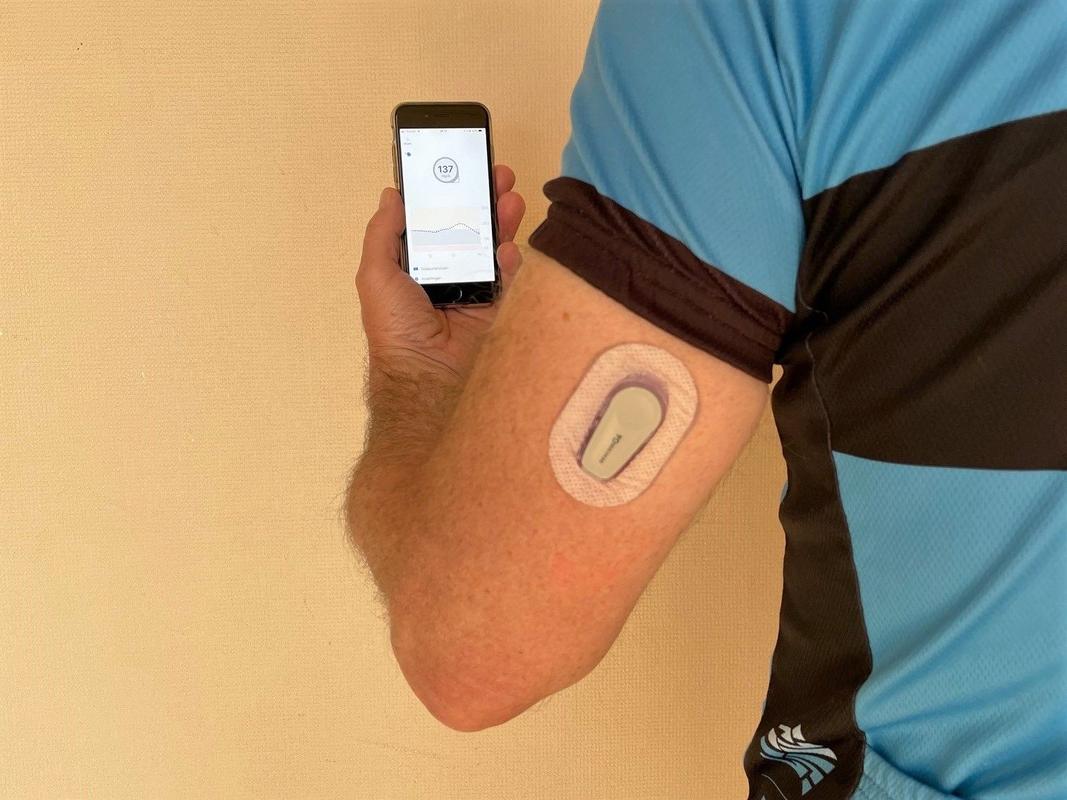People with type 1 diabetes have to measure the level of sugar in their blood regularly to be able to adjust when necessary. In the past, this was done with finger pricks, but nowadays, most patients carry a device with a subcutaneous sensor. This is linked to an app on the patient’s smartphone or smartwatch so he can easily monitor or follow-up on his values.
There are two types of these devices: with or without an alarm function for low or high blood sugar levels. In Belgium, the reimbursement is currently more limited for the type with an alarm.
Comparative trial in 254 patients
To assess whether the alarm function provides added value, a team of Belgian researchers set up a prospective, comparative trial. In total 254 adults with type 1 diabetes from six Belgian diabetes centres participated in the trial. All patients were familiar with the sensor without alarm function. During the trial, half of them continued to use their usual sensor, the other half was given the type with an alarm function. Both groups were monitored for six months.
The group of patients using the sensor with alarm, were able to keep their blood sugar levels in check better and experienced less anxiety about hypoglycaemia.Dr. Margaretha Visser, endocrinologist
Dr. Margaretha Visser, endocrinologist and doctoral student: “The group of patients using the sensor with alarm, were generally better able to keep their blood sugar levels in check. On average, their readings were longer between the target values. They were less often hypo- or hyperglycaemic – low or high blood sugar levels – than patients using the sensor without alarm. In addition, questionnaires told us that they experienced less anxiety about hypoglycaemia and were more satisfied with the treatment. So the sensor with alarm functions gives better blood sugar control and an increased quality of life.”
Together with the reimbursement criteria, our results will have a big impact on the type of sensor someone with type 1 diabetes will choose.Prof. dr. Pieter Gillard, endocrinologist
Prof. dr. Pieter Gillard, endocrinologist and diabetes specialist at UZ Leuven and principal investigator of the trial: “The added value of the alarm function has been unclear for quite some time. Older studies were limited in scope and design. Because our comparative research has monitored a large group of people for a long time, the conclusions are reliable. Together with the reimbursement criteria, our results will have a big impact on the type of sensor someone with type 1 diabetes will choose in consultation with the attending team.”
More information about type 1 diabetes
Type 1 diabetes mellitus is a type of diabetes that is associated with a deficiency of the hormone insulin, because the immune system destroys the insulin-producing cells of the pancreas, stopping sugar (glucose) from the blood to be absorbed by the body cells and causing blood sugar levels to rise (glycaemia).
Insulin therapy is of vital importance to keep your blood sugar levels in check and to prevent all kinds of acute and chronic problems. An acutely low (hypo-) or high (hyper-) glycaemia can be life-threatening. In the long run it can also cause irreversible damage to the eyes, kidneys or nerves.


